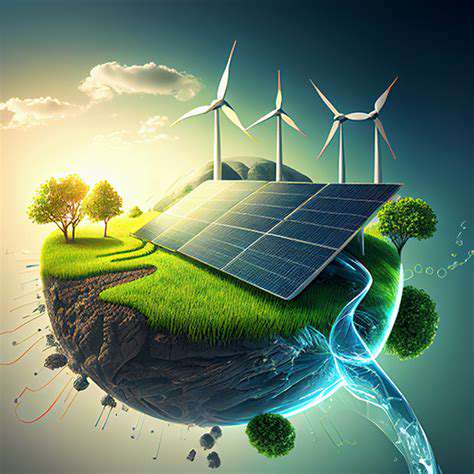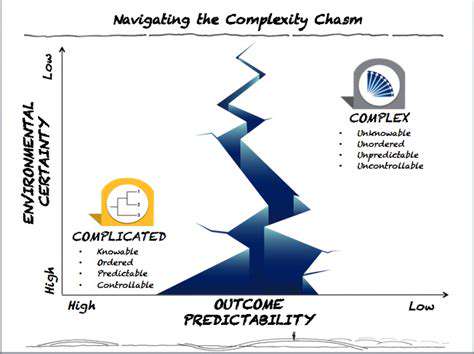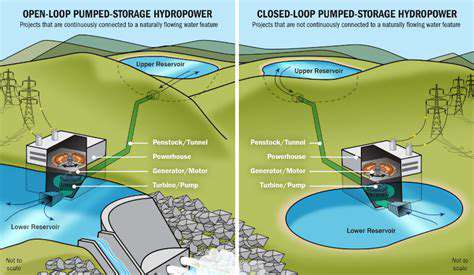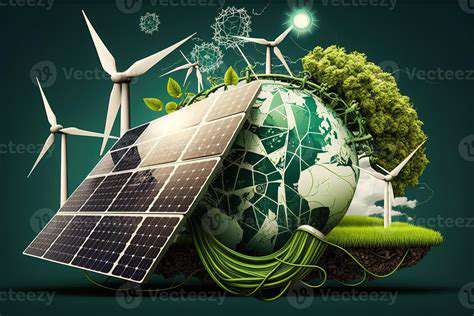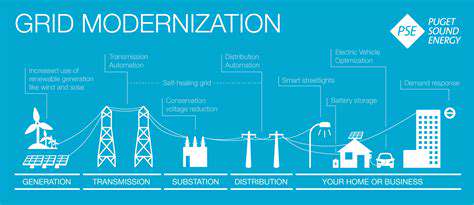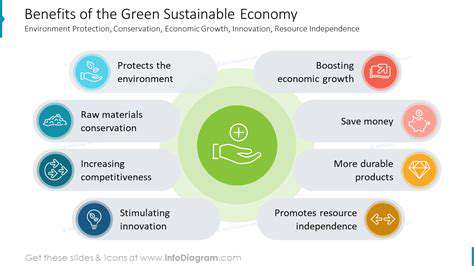Economic Impact of Decentralization of Energy Generation
Decentralized energy systems represent a significant departure from traditional centralized power grids. Instead of relying on large, centralized power plants to generate and distribute electricity, decentralized systems utilize distributed energy resources (DERs) located closer to the point of consumption. This paradigm shift offers a multitude of benefits, including enhanced resilience and reduced reliance on vulnerable infrastructure.
This shift towards decentralization is driven by a growing recognition of the limitations and vulnerabilities of centralized energy systems. Furthermore, the rise of renewable energy technologies has made decentralized energy systems more viable and economically attractive than ever before.
Distributed Energy Resources (DERs) Explained
Distributed energy resources (DERs) are the building blocks of decentralized energy systems. These resources include solar panels, wind turbines, energy storage systems, and microgrids. Each DER contributes to the overall energy mix, often reducing reliance on the traditional grid.
Understanding the diverse types of DERs is crucial for comprehending the intricacies of decentralized energy systems. These resources work in harmony to create a more resilient and sustainable energy infrastructure.
Benefits of Decentralization
Decentralized energy systems offer a range of significant advantages. Enhanced grid resilience is a major benefit, as localized generation reduces the impact of outages or attacks on the central grid.
Reduced transmission losses and improved energy efficiency are also key benefits of decentralized energy models. This increased efficiency translates into lower costs and greater sustainability. Furthermore, decentralized energy promotes local economic development by creating jobs and fostering local energy entrepreneurship.
Technological Advancements
Technological advancements have played a crucial role in the development of decentralized energy systems. The improved efficiency and cost-effectiveness of renewable energy technologies, such as solar panels and wind turbines, have made them more attractive for decentralized applications.
Advancements in energy storage technologies are also essential for the smooth operation of decentralized systems. These advancements help to manage fluctuations in renewable energy generation and ensure a stable and reliable energy supply.
Challenges and Considerations
Despite the numerous benefits, decentralized energy systems face certain challenges. Interoperability issues between different DERs and the grid can create complexities in system management.
Ensuring grid stability and managing the integration of variable renewable energy sources are critical considerations. Furthermore, regulatory frameworks and policy support are necessary to foster the widespread adoption of decentralized energy technologies.
Economic Implications
Decentralized energy systems have significant economic implications, creating new business opportunities and potentially reducing energy costs for consumers. The development of new markets and industries associated with DERs is a major economic driver. From component manufacturing to system installation and maintenance, decentralized energy creates significant employment opportunities.
This economic impact often translates to a more sustainable and resilient energy sector, fostering local economies and reducing reliance on imported fuels.
Policy and Regulatory Landscape
Government policies and regulations play a critical role in shaping the future of decentralized energy. Supportive policies can incentivize investment in DERs, stimulate innovation, and encourage the adoption of these technologies.
Clear regulatory frameworks are needed to address interoperability issues, grid stability concerns, and other challenges associated with integrating decentralized systems into the existing energy infrastructure.
Reduced Transmission and Distribution Costs
Reduced Transmission and Distribution Costs
Decentralized energy systems, by their very nature, significantly reduce the need for extensive transmission and distribution infrastructure. Instead of transporting electricity long distances from large centralized power plants, smaller-scale generation sources are located closer to consumers. This drastically cuts down on the massive costs associated with building, maintaining, and upgrading high-voltage transmission lines and distribution networks. These savings translate directly into lower electricity prices for consumers and a more efficient use of resources.
Increased Operational Efficiency
Decentralized systems often feature microgrids and distributed generation, leading to more localized control and management of energy flow. This allows for greater operational efficiency, as individual systems can respond more quickly to changes in demand and supply. Microgrids, for instance, can isolate affected areas during outages, minimizing disruption and potentially restoring power faster than traditional centralized systems.
Enhanced Reliability and Resilience
The distribution of generation sources across a wider area creates a more robust and resilient energy network. If one generation source fails, the impact is localized, and the overall system remains functional. This contrasts sharply with centralized systems, where a single point of failure can cause widespread outages. The improved reliability translates to reduced downtime and minimized disruption to critical services.
Lower Environmental Impact
Reduced transmission distances translate to lower energy losses during transmission. This is crucial, as transmission losses often contribute significantly to the environmental footprint of the energy sector. Moreover, decentralized systems often favor renewable energy sources, further diminishing the overall environmental impact compared to relying heavily on large-scale fossil fuel power plants. This is a key benefit of moving away from centralized energy production.
Improved Grid Stability
Integrating distributed generation sources can enhance the stability of the overall electricity grid. These smaller generators can respond more quickly to fluctuations in demand, providing a more stable and reliable energy supply. This also reduces the strain on the main grid, which can lead to long-term savings and improvements in grid management.
Economic Benefits for Consumers
Lower transmission and distribution costs directly translate to lower electricity bills for consumers. Combined with the potential for increased energy efficiency and the ability to access cleaner energy sources, decentralized systems offer substantial economic advantages to end-users. This can lead to a more equitable distribution of energy costs across the population and promote greater affordability.
Job Creation and Local Economic Development
The growth of the decentralized energy sector fosters opportunities for job creation in manufacturing, installation, maintenance, and related industries. This localized development can stimulate economic activity within communities, boosting local economies and creating new avenues for employment. This is a significant benefit that can ripple through communities and provide sustainable economic development opportunities.
Increased Energy Security and Resilience
Decentralized Energy Systems and Reduced Reliance on Imports
Decentralized energy systems, characterized by the generation and distribution of energy closer to the point of consumption, offer significant potential for enhancing energy security. By reducing reliance on centralized grids and large-scale power plants, communities become less vulnerable to disruptions in global energy markets, geopolitical instability, or infrastructure failures. This localized approach fosters a more resilient energy landscape, mitigating the risks associated with long-distance transmission and dependence on foreign energy sources. The benefits extend beyond immediate security; they pave the way for greater energy independence and sustainability in the long term.
Economic Opportunities in Local Energy Production
The shift towards decentralized energy creates numerous economic opportunities. Small-scale renewable energy projects, such as rooftop solar installations and community wind farms, stimulate local job creation in manufacturing, installation, and maintenance. These initiatives foster a vibrant local energy sector, attracting investments and boosting economic activity in rural and underserved areas. Furthermore, the development of local energy infrastructure and expertise can lead to the emergence of new businesses and entrepreneurship, driving economic growth and diversification.
Reduced Energy Costs and Enhanced Affordability
Decentralized energy systems can contribute to lower energy costs for consumers. By reducing reliance on large-scale, often expensive, centralized energy infrastructure, costs associated with transmission and distribution can be significantly lowered. This, in turn, leads to lower energy bills for households and businesses. Furthermore, the adoption of renewable energy sources, often a core component of decentralized systems, can reduce the overall cost of electricity generation, making energy more affordable and accessible, especially for vulnerable populations.
Improved Energy Infrastructure Resilience
Decentralized energy systems exhibit greater resilience in the face of unforeseen events, such as natural disasters or cyberattacks. Distributed generation and storage technologies allow communities to maintain energy access even when centralized infrastructure is compromised. This enhances the overall reliability and security of the energy supply, mitigating the potential for widespread power outages and disruptions. The localized nature of these systems makes them more resistant to large-scale disruptions, bolstering the robustness of the entire energy network.
Sustainable Development and Environmental Benefits
The transition to decentralized energy systems aligns seamlessly with sustainable development goals. By embracing renewable energy sources, communities can drastically reduce their carbon footprint and promote environmental sustainability. This shift towards cleaner energy solutions contributes to a healthier environment and mitigates the negative impacts of climate change. Furthermore, the localized nature of these systems promotes energy efficiency, reducing overall consumption and minimizing waste, thus contributing to a more sustainable energy future for all.
Humanity's earliest attempts to make sense of the world can be traced back to prehistoric cave paintings and oral traditions. These primitive yet profound expressions weren't merely entertainment; they formed the bedrock of cultural identity and collective memory. The flickering firelight illuminating these ancient tales created an immersive experience long before modern technology existed. Through rhythmic chants and vivid gestures, our ancestors transformed simple stories into powerful tools for survival and social cohesion.
Potential for Job Creation and Economic Growth
Decentralized Industries and New Job Markets
Decentralization fosters the emergence of innovative industries and services that were previously concentrated in centralized hubs. This leads to the creation of new job opportunities in areas like logistics, e-commerce, and digital services. For instance, the rise of online marketplaces and decentralized finance (DeFi) platforms has created numerous jobs in software development, data analysis, and customer support, often in previously underserved communities.
The decentralized nature of these industries often allows for remote work, further expanding job opportunities to individuals in different locations and with diverse skill sets. This flexibility in the workforce can lead to greater economic participation and reduce reliance on traditional commuting patterns.
Enhanced Local Economic Activity
By distributing economic activity across different regions, decentralization stimulates local economies. Small businesses and entrepreneurs can thrive in areas that previously lacked significant investment or opportunities. This leads to increased local purchasing power, supporting local suppliers and creating a more robust and diversified economic ecosystem.
Increased Entrepreneurial Activity
Decentralized systems often lower barriers to entry for entrepreneurs, enabling individuals to start businesses with less reliance on traditional capital or infrastructure. This fosters innovation and competition, driving economic growth and development at a local level. The lowered barriers to entry can also attract entrepreneurs from various backgrounds, bringing diverse perspectives and expertise to the marketplace.
Improved Infrastructure Development
The need to support decentralized activities often necessitates investment in local infrastructure. This can include improvements in transportation, communication networks, and energy grids. This targeted investment in infrastructure can stimulate further economic activity and create jobs in construction, engineering, and related fields. The development of robust digital infrastructure is particularly important in a decentralized economy.
Skill Development and Workforce Adaptation
The transition to a decentralized economy demands a workforce with new skills and abilities. This necessitates investment in training and education programs to equip individuals with the necessary competencies in areas like blockchain technology, data analysis, and digital marketing. This ongoing skill development ensures that the workforce remains competitive in the evolving economic landscape and fosters a more adaptable and resilient economy.
Reduced Dependence on Centralized Hubs
Decentralization can reduce the over-reliance on large, centralized hubs, mitigating risks associated with economic shocks or downturns in specific regions. This diversification of economic activity leads to greater resilience and stability, spreading the economic burden across a wider range of locations. The reduced concentration of resources in single locations also reduces risks associated with natural disasters or other unforeseen events.
Improved Access to Resources and Services
Decentralized systems can facilitate greater access to resources and services for individuals and businesses in previously marginalized communities. This includes access to financial services, healthcare, education, and other essential needs. By breaking down geographical barriers, decentralization can foster a more equitable distribution of opportunities and resources, leading to more inclusive economic growth across all segments of society.
Economic Incentives and Policy Support
Financial Incentives for Decentralized Energy
Decentralized energy systems, often involving renewable sources like solar and wind power, frequently require significant upfront investment. To incentivize adoption and accelerate deployment, governments can implement various financial incentives. These might include tax credits or deductions for homeowners and businesses installing renewable energy systems. Subsidies for research and development of decentralized technologies could also foster innovation and drive down costs over time, making these systems more accessible and economically viable for a wider range of users. Furthermore, grants and loans specifically targeted at community-based energy projects can stimulate local participation and ensure equitable access to clean energy.
Targeted financial incentives can play a crucial role in fostering a rapid transition to decentralized energy systems. By reducing the financial burden on individuals and organizations, these incentives make it more attractive to invest in and adopt these technologies. This can lead to a significant increase in the adoption rate, accelerating the deployment of renewable energy and creating a more sustainable energy landscape.
Policy Support for Infrastructure Development
The successful implementation of decentralized energy systems hinges on robust infrastructure. Supporting policies are vital to ensure the smooth operation and maintenance of these systems. These policies can include streamlined permitting processes for the installation of decentralized energy infrastructure, such as solar farms or wind turbines. Furthermore, proactive policies can address grid integration challenges, ensuring that decentralized energy sources can effectively connect to existing power grids. This often involves investments in smart grid technologies, fostering the flow of electricity from decentralized sources to the grid and back, ensuring a balanced and efficient energy network.
Reliable and effective infrastructure is essential for the long-term success and sustainability of decentralized energy systems. These support policies can mitigate the financial and technical hurdles associated with implementing these systems, fostering a supportive environment for decentralized energy adoption. By proactively addressing infrastructure needs, governments can encourage private investment, enhance energy security, and promote the overall economic viability of the decentralized energy sector.
Regulatory Frameworks and Standards
Clear and consistent regulatory frameworks are crucial for guiding the development and deployment of decentralized energy systems. These frameworks should address safety standards, environmental regulations, and interoperability issues. Establishing clear standards for the performance, safety, and reliability of decentralized energy technologies can foster public trust and encourage wider adoption. Furthermore, regulations should incentivize the development of standards for energy storage solutions, crucial for ensuring the reliability and stability of decentralized energy systems, particularly those dependent on intermittent renewable sources. These standards will ensure a high level of quality and safety in the decentralized energy sector and promote innovation in this rapidly evolving field.
A well-defined regulatory framework can minimize risks, promote transparency, and foster public confidence in decentralized energy technologies. These frameworks should be adaptable to technological advancements and market trends, ensuring they remain relevant and effective as the sector continues to evolve. Such frameworks will facilitate the integration of decentralized energy systems into the existing energy landscape, driving economic growth and promoting environmental sustainability.
By establishing clear and comprehensive regulatory frameworks, governments can mitigate risks associated with decentralized energy implementation, facilitate effective integration of these systems, and ultimately create a more sustainable energy future. This includes establishing clear legal frameworks for the development and operation of decentralized energy systems, as well as defining responsibilities and liabilities for system components and operators. This clarity will foster confidence among investors, developers, and consumers, encouraging wider participation and accelerating the transition to sustainable energy sources.
